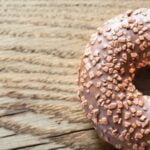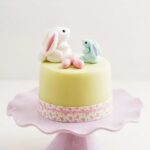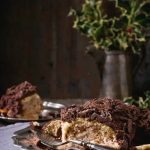How to decorate a cake board with fondant is an essential skill for any baker or cake decorator looking to take their creations to the next level. Fondant-covered cake boards can add an elegant and professional touch to any cake presentation, making it a standout centerpiece for any event or celebration.
The process of decorating a cake board with fondant involves not only choosing the right materials and techniques but also understanding the importance of creating a cohesive and visually appealing presentation. From selecting the appropriate type of cake board to adding decorative embellishments, every step plays a crucial role in achieving a stunning finished product.
In this article, we will delve into the world of cake board decoration with fondant, providing valuable insights into the various types of cake boards available, tips for preparation, selecting the best fondant, step-by-step decorating techniques, ideas for embellishments, troubleshooting common issues, and applying final touches.
Whether you’re a beginner looking to hone your skills or an experienced decorator seeking fresh inspiration, this comprehensive guide will equip you with the knowledge and expertise needed to create beautifully decorated cake boards with fondant.
Types of Cake Boards
When it comes to decorating a cake board with fondant, the type of cake board you choose plays a crucial role. There are several types of cake boards available, each with its own unique features and suitability for fondant decoration.
Cardboard Cake Boards
Cardboard cake boards are perhaps the most common type of cake boards used in bakeries and home baking. They are lightweight, affordable, and come in various shapes and sizes. However, when it comes to covering them with fondant, extra care must be taken to prevent moisture from seeping through the cardboard and causing the fondant to become soggy.
Drum Cake Boards
Drum cake boards are sturdier and more durable compared to cardboard cake boards. They are often made of thicker cardboard or foam core and provide better support for heavier cakes. When decorating a cake board with fondant, drum boards are an excellent choice as they can withstand the weight of the fondant without bending or warping.
Wooden Cake Boards
For a more rustic or elegant look, wooden cake boards are a popular choice. These sturdy boards offer stability and can be easily covered with fondant for a smooth finish. However, it’s important to ensure that the wood is sealed properly to prevent any moisture from affecting the fondant.
When choosing a cake board for fondant decoration, consider the weight of your cake and the overall design aesthetic you want to achieve. Each type of cake board has its own advantages and limitations when it comes to decorating with fondant, so make sure to select one that best suits your specific needs.
Preparing the Cake Board
Decorating a cake board with fondant can add a professional and polished look to your cake presentation. Not only does it provide a beautiful base for your cake, but it also allows for endless creativity and customization. Whether you are making a cake for a special occasion or just want to elevate your baking skills, learning how to decorate a cake board with fondant is a worthwhile skill to have in your repertoire.
Before you begin decorating your cake board with fondant, it’s important to consider the type of cake board you will be using. There are various options available, including cardboard, foam core, and Masonite boards. Each type has its own advantages and limitations when it comes to fondant decoration.
For example, foam core boards are lightweight and easy to cut into custom shapes, while Masonite boards provide a sturdy base for heavier cakes. Consider the size and weight of your cake as well as the design you have in mind when choosing the right type of cake board for fondant decoration.
Once you have selected the appropriate cake board, it’s time to prepare it for fondant decoration. Start by making sure the surface of the board is clean and free from any crumbs or residue.
You can use a damp cloth or paper towel to wipe down the surface before applying a thin layer of buttercream or piping gel to help the fondant adhere smoothly. This step is essential for achieving a flawless finish when decorating a cake board with fondant.
Next, consider adding an extra decorative touch to your prepared cake board by using colored or patterned fondant. You can roll out different colors of fondant and create intricate designs such as marble patterns or geometric shapes. Additionally, consider adding texture by using embossing tools or stencils on the fondant before applying it to the prepared cake board. These embellishments will further enhance the overall presentation of your decorated cake board with fondant.
- Choose the right type of cake board based on the size and weight of your cake
- Ensure that the surface of the chosen cake board is clean and free from any debris
- Consider adding decorative elements such as colored or patterned fondant, textures, and embossing
Choosing the Right Fondant
When it comes to decorating a cake board with fondant, selecting the right fondant is crucial to achieving a professional and flawless finish. There are several types of fondant available on the market, each with its own unique characteristics and suitability for different projects.
Whether you are looking for a fondant that is easy to work with, has a smooth texture, or comes in a variety of colors, there are a few key factors to consider when choosing the best fondant for decorating cake boards.
One important consideration when selecting fondant for your cake board decoration is its elasticity and pliability. A good quality fondant should be flexible enough to cover the cake board without tearing or cracking, while still holding its shape once applied. It should also have a smooth and consistent texture, free from lumps or air bubbles, for a polished look.
Another factor to take into account is the color range that the fondant offers. If you have a specific color scheme in mind for your cake board decoration, you may want to choose a fondant that comes in a wide variety of shades or can be easily colored using gel food coloring. This will give you the flexibility to match the fondant to the theme of your cake and create cohesive designs.
Lastly, consider the taste and texture of the fondant. While some decorators prioritize appearance over flavor, others may prefer a fondant that tastes as good as it looks. Opting for a fondant with a pleasant flavor can enhance the overall experience of cutting and serving the cake.
| Factors | Considerations |
|---|---|
| Elasticity | Flexible but holds shape |
| Color Range | Variety of shades or customizable colors |
| Taste and Texture | Pleasant flavor and smooth texture |
Decorating Techniques
Decorating a cake board with fondant can elevate the overall appearance of your cake presentation. Not only does it provide a polished and professional look, but it also allows you to coordinate the cake board with the theme or color scheme of your cake. Whether you are a professional baker or just enjoy baking as a hobby, learning how to decorate a cake board with fondant is a valuable skill that can take your cakes to the next level.
To start, you will need to gather the necessary materials for covering, smoothing, and shaping the fondant on the cake board. This includes fondant, powdered sugar or cornstarch for dusting, a rolling pin, and a sharp knife or pizza cutter for trimming the excess fondant. It’s also helpful to have a fondant smoother tool and any desired embellishments like edible glitter or pearls.
Now that you have all your materials ready, here are step-by-step instructions on how to decorate a cake board with fondant:
1. Roll out the fondant: Dust your work surface with powdered sugar or cornstarch to prevent sticking. Roll out the fondant into a circle or square shape that is slightly larger than your cake board.
2. Covering the cake board: Carefully lift and drape the rolled-out fondant over the cake board, ensuring that it covers the entire surface without wrinkles or air pockets.
3. Smoothing and shaping: Gently smooth out the fondant using your hands or a fondant smoother tool, working from the center towards the edges to remove any bumps or imperfections. Use a sharp knife or pizza cutter to trim off any excess fondant around the edges of the cake board.
Following these steps will ensure that you achieve a beautifully covered, smoothed, and shaped cake board with fondant that will complement your decorated cake.
Additional tips for achieving a flawless finish include using high-quality fondant that is easy to work with and produces vibrant colors when dyed. It’s also important to properly prepare your cake board by cleaning it and applying a thin layer of frosting or piping gel before placing the rolled-out fondant on top. With practice and attention to detail, you can master this technique and create stunning displays for your cakes.
Adding Embellishments
Decorating a cake board with fondant doesn’t just stop at covering it with a smooth layer of fondant. Adding embellishments to the fondant-covered cake board can take your presentation to the next level. There are countless creative ways to personalize and enhance the look of your cake board, making it a stunning backdrop for your finished cake.
One popular way to add flair to a fondant-covered cake board is by using cutters or molds to create decorative shapes out of fondant. These can range from simple flowers and leaves to more intricate designs like lace patterns or scrollwork. These fondant decorations can be placed directly onto the covered cake board, adding visual interest and dimension.
Another option for embellishing a fondant-covered cake board is by painting or airbrushing it. This technique allows for endless customization, as you can create any design or pattern you desire. Whether it’s a subtle ombre effect, a bold geometric pattern, or a delicate hand-painted floral motif, painting the fondant-covered cake board adds an extra element of artistry.
Furthermore, adding edible sequins, pearls, or glitter dust can give the fondant-covered cake board a touch of sparkle and glamour. These shimmering accents catch the light and make the presentation of the cake even more eye-catching. It’s important to choose edible decorations that complement the overall design and color scheme of the cake and its surrounding decor.
| Embellishment Ideas | Description |
|---|---|
| Fondant Shapes | Create decorative shapes out of fondant using cutters or molds. |
| Painted Designs | Use food-safe paints or airbrushing to customize the look of the fondant-covered cake board. |
| Edible Sparkle | Add shimmering accents like edible sequins, pearls, or glitter dust for a touch of glamour. |
Troubleshooting
Fondant Cracks or Tears
If you encounter issues with your fondant cracking or tearing when covering the cake board, it may be due to several factors. One common reason is that the fondant is too dry, which can cause it to crack as it is stretched over the surface.
To fix this issue, try kneading a small amount of vegetable shortening into the fondant to make it more pliable. Additionally, make sure to roll out the fondant evenly and gently smooth it over the cake board to prevent tears.
Air Bubbles Underneath Fondant
Air bubbles forming underneath the fondant can create an uneven and bumpy appearance on the cake board. To avoid this problem, carefully smooth out the fondant as you apply it to the board, paying special attention to any wrinkles or creases. If air bubbles do form, use a small pin to gently prick them and then press down on the area to release the trapped air.
Fondant Adhering Unevenly
Sometimes, you may find that the fondant is not adhering smoothly or evenly to the cake board surface. This can be caused by moisture or grease on the board, preventing proper adhesion of the fondant. To remedy this issue, clean and dry the cake board thoroughly before applying a thin layer of piping gel or corn syrup to help the fondant stick better. Use a smoother tool to press down on any areas where the fondant is not adhering properly.
By addressing these common issues that may arise when decorating a cake board with fondant, you can ensure that your final creation looks polished and professional. With careful preparation and attention to detail, you can troubleshoot any problems that may occur during the process of working with fondant for your cake boards.
Final Touches
In conclusion, decorating a cake board with fondant is a fantastic way to elevate your cake presentation and create a stunning and cohesive look for any special occasion. By taking the time to decorate the cake board, you can tie in the design of your cake and truly impress your guests or clients.
Whether you are a professional baker or an amateur enthusiast, learning how to decorate a cake board with fondant can add an extra level of sophistication to your baked creations.
After following the step-by-step instructions for covering, smoothing, and shaping the fondant on the cake board, it’s important to focus on the final touches. Adding embellishments such as edible flowers, piped royal icing designs, or even painted details can take your decorated cake board to the next level. These finishing touches will not only enhance the overall aesthetic but also showcase your attention to detail and creativity.
When presenting your beautifully decorated cake board with fondant, consider incorporating complementary elements such as fresh flowers, themed decorations, or coordinating colors that tie into the theme of the event. Additionally, displaying the finished cake on a decorative stand or pedestal can further enhance its visual appeal. Remember that every detail counts when it comes to creating a visually stunning presentation, and by implementing these final touches, you are sure to leave a lasting impression.
Frequently Asked Questions
How Do You Get Fondant to Stick to a Cake Board?
To get fondant to stick to a cake board, you can use piping gel or royal icing as an adhesive. Simply spread a thin layer on the board and then carefully place the rolled fondant on top, gently pressing it down to ensure it adheres.
How Far in Advance Can I Cover a Cake Board With Fondant?
You can cover a cake board with fondant up to a week in advance, as long as the fondant is stored in a cool, dry place. This will allow the fondant to dry and harden, providing a stable base for your cake.
How Do You Harden Fondant on a Cake Board?
To harden fondant on a cake board, allow it to air dry for at least 24 hours. You can also accelerate the drying process by placing the board in front of a fan or using a food dehydrator set to low heat. This will help create a firm surface for your decorated cake.

Welcome to my blog about home and family. This blog is a place where I will share my thoughts, ideas, and experiences related to these important topics. I am a stay-at-home mom with two young children. I hope you enjoy reading it! and may find some helpful tips and ideas that will make your home and family life even better!





